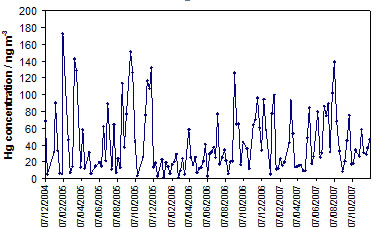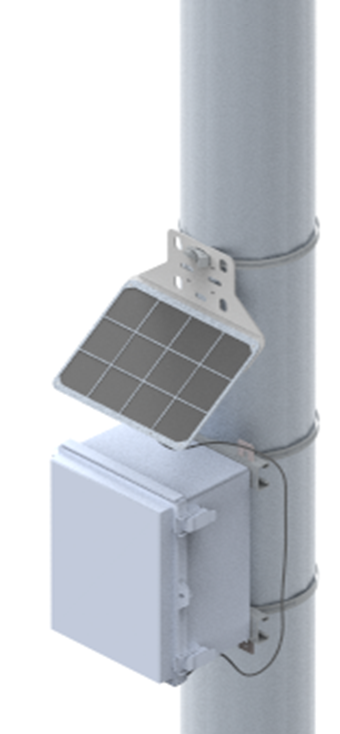MERCURY IN AMBIENT AIR
Mercury in Ambient Air is now routinely measured in both urban and rural sites due to the toxicity and mobility of this element. In addition workplace air monitoring for mercury and cell room monitoring are essential to protect the health of the workers in the relevant industries. Mercury Analysers for these applications can be Online Mercury Monitoring Stations which are designed for fixed long periods of unattended operation, or Offline Analysers which are manually operated with traps exchanged on a daily to monthly basis and which allow flexible sampling points. The essential differences in these applications are the level of mercury expected, the sample collection time and the frequency of collection. Ambient air sampling usually involves looking for lower levels (0.5 to 5ng/m3) of mercury which do not tend to change significantly over time (except in cases of sudden pollution). Sampling times are typically 5 to 30mins for online measurements and daily to monthly for remote sampling. For workplace air sampling, the levels are usually higher (0-50µg/m3) and more prone to sudden fluctuations therefore shorter sampling times are used with a higher frequency of sampling. The Online Analysers can be tailored to exact requirements but generally can be split into two formats:
A Passive Sampling Approach
An Active Sampling Approach
The offline systems are available in different options depending on the customer's needs;
|
||||||
Hg Concentration |
||||||
If ambient air at single location over long period is required then online system is preferable depending on degree of automation required. If workplace air at single location or at multiple locations is required then sampling frequency is usually expected to be high. This means the most automated system is the best option. Workplace air at various locations within a site really depends on number of locations, length of sample lines and sampling rates required. If you require any further information on Mercury in Ambient Air or any other application, please complete our Information Request Form. |
||||||






